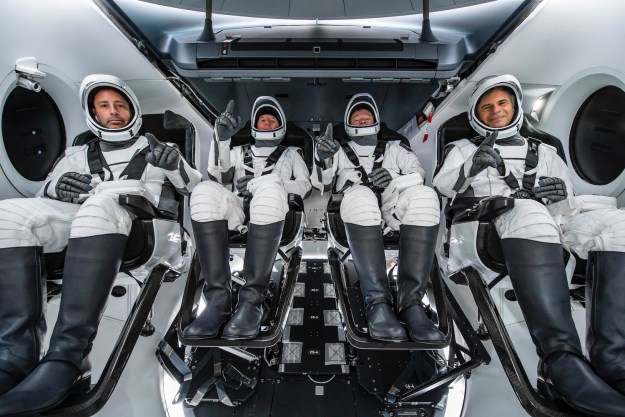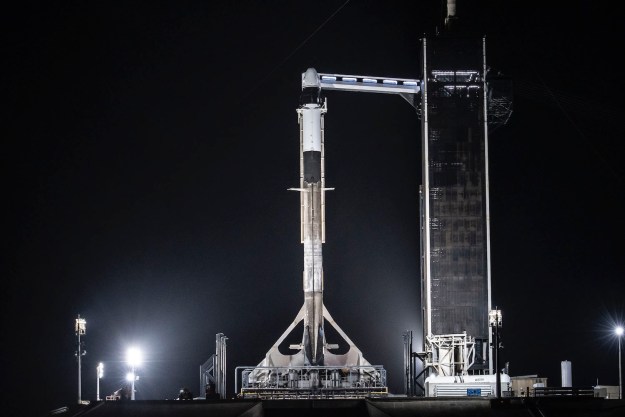When it comes to space missions, we normally think about the challenges in terms of technological developments. But if we ever hope to send a manned mission to Mars, then we’re going to have to confront not only our technological but also our psychological limitations.
If you’ve ever wondered what it takes to be an astronaut, mentally speaking, and whether you’d be able to last on a space mission, then we got the scoop on what it takes to stay sane in space from extreme psychology researcher Nathan Smith of the University of Manchester, who has worked on psychology projects with NASA and the European Space Agency.
Adaptation to unusual environments

Humans are adaptable creatures, and any environment can begin to feel like home once we get used to it. When it comes to space missions, however, there are numerous challenges: Not only adjusting to the physical sensations of reduced gravity and artificial air, but also dealing with cramped conditions. The International Space Station (ISS) is relatively spacious, with crew members able to have some degree of personal space and privacy. But a Mars mission would likely be far more cramped, with people living in very close quarters.
“Part of the training for crews going to these places is to try and speed up that transition and that adjustment to the environment. They do that by developing microcosms of home,” Smith said. For example, astronauts will decorate their spaces with mementos and symbols of home, to create an environment which reflect them and their culture and which connect them back to Earth. This is similar to what has historically been done on sailing ships and other remote environments.
Training is of course important as well. Astronauts need to practice daily tasks to become comfortable in their environment. “From a behavioral point of view, we teach people what they need to do to adjust to that environment,” Smith said. This is particularly true in zero gravity environments like the ISS, which require extra time to adjust to.
Even though the cells in our bodies can adjust to zero gravity within seconds, it takes much longer for humans to feel comfortable in such an environment, leading to some strange experiences. “The first night in space when I was drifting off to sleep, I suddenly realized that I had lost track of my arms and legs,” one Apollo astronaut described in a NASA interview. “For all my mind could tell, my limbs were not there. However, with a conscious command for an arm or leg to move, it instantly reappeared — only to disappear again when I relaxed.”
Physiology impacts psychology

There are plenty of ways that microgravity affects the physical body, too, and it can be difficult to unpick the differences between physical issues and psychological ones. Astronauts will who travel outside the protective magnetosphere of the Earth can expect to be bombarded with ionizing cosmic radiation, which can damage DNA and can cause gastrointestinal issues, fatigue, and vomiting. There’s also an issue with weightlessness, caused “space sickness.” It’s similar to car sickness, in which the input from the eyes doesn’t match the feeling of the body, and it can cause headaches and nausea.
Similar to the way that mountaineers must deal with altitude sickness, astronauts must learn to live and work in conditions in which they may feel physically sick, which can have a big impact on their mood.
“It’s hard to disconnect the physiological and the physical,” Smith said. “Most of the work we do, we come at it from a psychological perspective, but we have to consider the physiology as well. If you get an injury, that impacts your mood. So both are really important.”
The benefits of a good meal
One of the most effective ways to keep astronauts healthy and happy is to ensure that they’re well-fed. “Food is a basic, fundamental human need,” Smith said. “We need it for survival, but it also has a big psychological component in terms of boosting morale and bringing teams together. Having a meal together in the evening can be a really good way of keeping the crew cohesive and provides a bit of separation from work.”
Food monotony, on the other hand, when astronauts have to eat the same meals over and over again, can be quite demoralizing. That’s why the “care packages” of snacks which are sent to the ISS are so valuable. The astronauts on board the space station can request favorite foods be sent to them on resupply missions, and there is a great demand for condiments like ketchup to make food more palatable.

There is even some evidence that tastes change in space, similar to the way that airplane food always tastes terrible because of the low humidity and air pressure when flying. In space, fluids shift in the head and cause nasal congestion which can lead to foods tasting odd. Astronauts often prefer foods which are strongly flavored or spicy, and many have different food preferences in space than they do on Earth.
On a Mars mission, the astronauts wouldn’t be able to resupply, so they’d only have the food that they launched with, which would be a monotonous way to eat for months at a time. That’s why one project NASA and other space agencies are investing in is finding ways to grow fresh food in space.
As well as providing something tasty to eat, growing food can have psychological benefits for the astronauts: “One of the real strengths of that is that it creates some autonomy for the crew,” Smith said. “They’re not just having to rely on what they’ve got. They can start growing things for themselves and that’s really rewarding.” Having the agency over what type of plant they want to grow is valuable in an environment of limited choices.
Astronauts on strike
When astronauts are selected for training, space agencies don’t only look for qualified people who have the skills they need. They also look for certain personality types, who are suited to demanding environments. One important factor is the degree to which astronauts will follow orders given by ground control — because astronauts need to be independent enough to act on their own in certain situations, but they also need to be willing to follow the instructions given.
In 1973, the three-man crew of the Skylab mission went on strike for a day, cutting off communication with ground control. They complained that they had been worked too hard, with work days of up to 16 hours, so they decided to spend the day relaxing. “We would never work 16 hours a day for 84 straight days on the ground, and we should not be expected to do it here in space,” Skylab 4 Commander Jerry Carr said to NASA ground control, before beginning the 24-hour strike.

NASA did relent and agreed to an hour’s free time for the astronauts each day. But the incident drove home how little actual direct control space agencies have over the actions of their astronauts.
Lessons taken from the “Skylab mutiny” incident are that astronauts cannot be worked continuously and that they are in need of free time. Current policies for ISS astronauts are that they get some free time off each day and that they get weekends off. Thanks to improved communications infrastructure, ISS astronauts can video chat with their families and use the internet, which helps with relaxing during that free time.
Tensions between crews and ground control

The Skylab incident was a real-world example of how tensions between ground control and astronauts can cause problems.
“We talk about displacement,” Smith said. “That refers to the externalization of tension or stress from the crew back to ground control. You can see that in the communications between the two.” One issue Smith described is when ground control staff are communicating with crew and will give them lots of information, on the assumption that more information is always better. But for the crew, this can be frustrating and overwhelming. They just want to know the essential information that they need, and no more.
“There’s a tension point there,” Smith said. He compared the situation to the military concept of “ground truth,” in which the perspective of those people on the ground differs from that of the commanders located elsewhere. Space agencies must toe a delicate line between listening to the perspectives of a crew in space and making decisions for their long-term benefit with the full information available.
The existential horror of space
If weightlessness, sickness, food monotony, and being ordered around weren’t enough sources of stress, there is also the existential impact of space travel to contend with. Some astronauts report experiencing a profound change in how they view themselves and the world after seeing the Earth from space, in a phenomenon called the overview effect.
“The thing that really surprised me was that [the Earth] projected an air of fragility,” Apollo 11 astronaut Michael Collins described. “And why, I don’t know. I don’t know to this day. I had a feeling it’s tiny, it’s shiny, it’s beautiful, it’s home, and it’s fragile.”

As for what happens psychologically speaking when humans travel out of sight of the Earth for the first time, we just don’t know. It seems likely that being away from one’s home planet could have some profound psychological effects, in what has been named the “Earth out of view effect.” This must be similar to what early sailors must have felt when searching for the edge of the world.
“As we start to go deeper into the solar system, at some point we’ll get to the point where we can’t see the Earth anymore,” Smith said. “We don’t know how people will react to that. But for some people, you can imagine it really compounding feelings of disconnection, homesickness, isolation, and the trepidation of being in a capsule only a few millimeters thick.”
Editors' Recommendations
- Watch SpaceX’s Crew-4 astronauts arrive at new home in space
- Watch how space station astronauts get ready for bed
- NASA footage shows SpaceX Crew-4 training for ISS mission
- Watch NASA’s Crew-3 astronauts share highlights of their ISS mission
- How to watch Axiom-1 space tourists return from the ISS on Saturday




